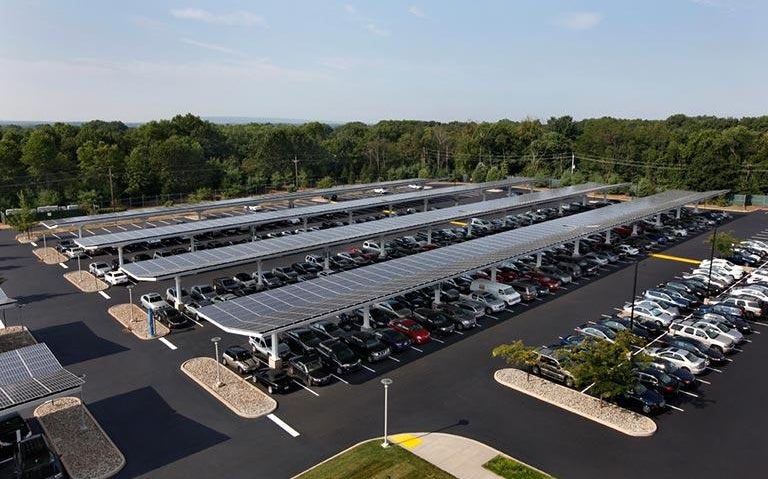Demand for electricity from the New England grid fell to its lowest level ever Sunday thanks to warm spring temperatures, sunny skies and bountiful production from rooftop solar panels.
Grid operator ISO New England said power system demand fell to 5,318 megawatts (MW) Sunday afternoon — more than 1,200 MW lower than the previous low demand record of 6,596 MW set in April 2024 and the fourth consecutive year in which the grid has registered its lowest demand yet. The all-time record high for demand in New England was set Aug. 2, 2006, when it reached 28,130 MW after a prolonged heat wave.
Sunday was Easter and featured temperatures of about 60 degrees with clear blue skies, all of which ISO-NE said contributed to the sinking demand for grid power. Another significant factor was that so-called behind-the-meter solar panels on homes and businesses generated around 6,600 MW of power Sunday afternoon, satisfying a significant share of the region’s actual electricity consumption without putting that demand on the grid.
As solar production waned through Sunday afternoon and into the evening, ISO-NE saw demand for power from its grid rise to an eventual peak at roughly 11,800 MW, more than twice what it was at its afternoon low.
It was an example of what ISO-NE said was once a rare phenomenon known as a duck curve, when demand on the electric grid is lower at midday than it is overnight. When represented as a line graph, the dip and rise in demand “somewhat resembles the profile of a waterfowl,” the grid operator said. The first one here happened in 2018.
Duck curve days are not disruptive to the grid or its operation, ISO-NE said. Its modeling and forecasting methods allow it to prepare for low-demand days and its control room workers keep the system in balance by instructing other energy resources to decrease production when behind-the-meter solar output is high, and to increase production when behind-the-meter solar output is low.
Duck curve days are becoming more frequent as additional homeowners and businesses install solar systems across New England, ISO-NE said. There were at least 106 such days in 2024, officials said, well more than the 73 in 2023 or the 45 in 2022.

